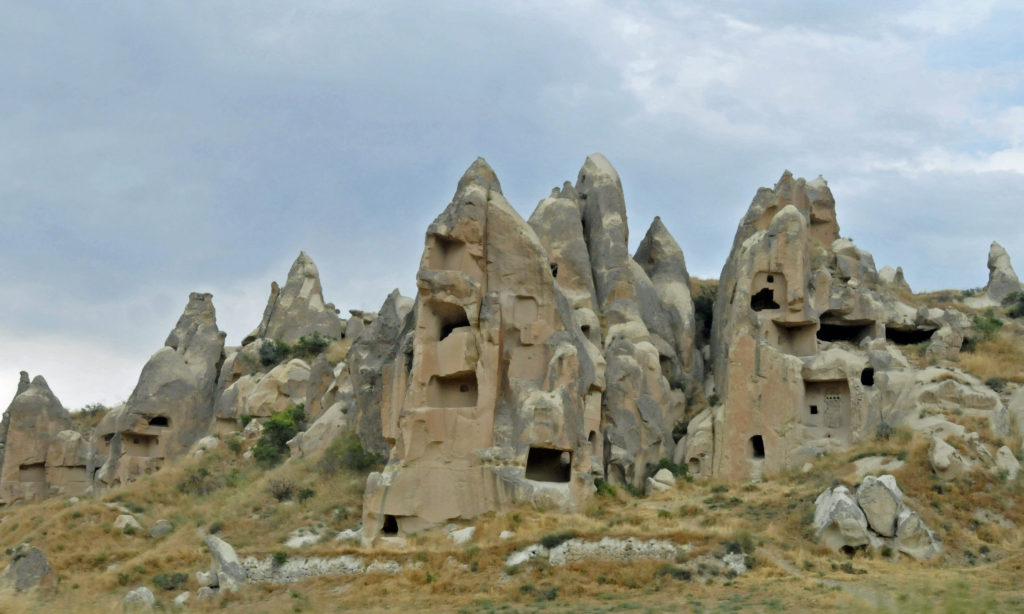
Cappadocia, a region in central Turkey, is famous for its out-of-this-world topography. It is also famous for the churches and their magnificent frescoes that have long taken advantage of that topography.
Cappadocia lies on a plateau formed when volcanic eruptions from the Taurus Mountains produced layers of hardened lava. Over time, wind and water differentially eroded the lava layers, producing thousands of cone-shaped structures called “fairy chimneys.” For at least 2500 years, residents of Cappadocia have hollowed out these fairy chimneys to create their homes, the lava providing excellent insulation and protection from enemies.
Cappadocians have been important to Christianity from its earliest days. The Book of Acts (2:9) reports that Cappadocians were present in Jerusalem during the first Pentecost. In the fourth century, theologians known as the “Cappadocian Fathers” helped articulate the doctrine of the Holy Trinity. One of them, Basil of Caesarea, encouraged the establishment of monasteries in Cappadocia, where Christian ascetics could practice their faith in solitude. Eventually, up to 600 small churches were created inside the fairy chimneys for use by Cappadocia’s monks. Artists covered the interior walls of many of the churches with colorful frescoes illustrating important Biblical and Church events.
Today, eleven of the finest of Cappadocia’s monastic churches are open to the public as part of the Goreme Open Air Museum, a UNESCO World Heritage site since 1984. Because of the absence of natural light inside the fairy chimneys, many of the frescoes are very well preserved and others have been meticulously restored. Some of the frescoes were created in the eighth century, when Byzantine Iconoclasts outlawed images of the divine. But most of the frescoes date to the 10th, 11th and 12th centuries, when it was again permissible to portray Jesus. Scenes of St. George slaying the dragon are common, as are pictures of important Biblical figures.